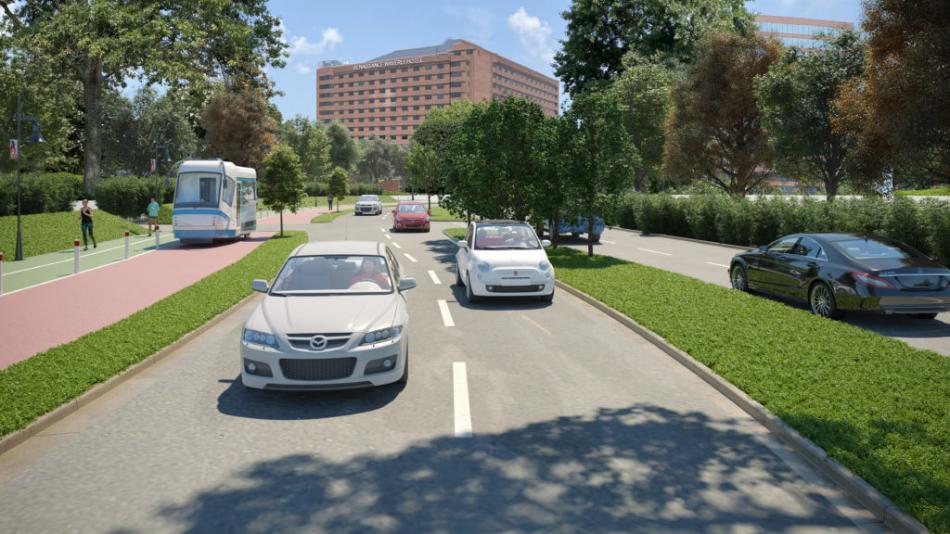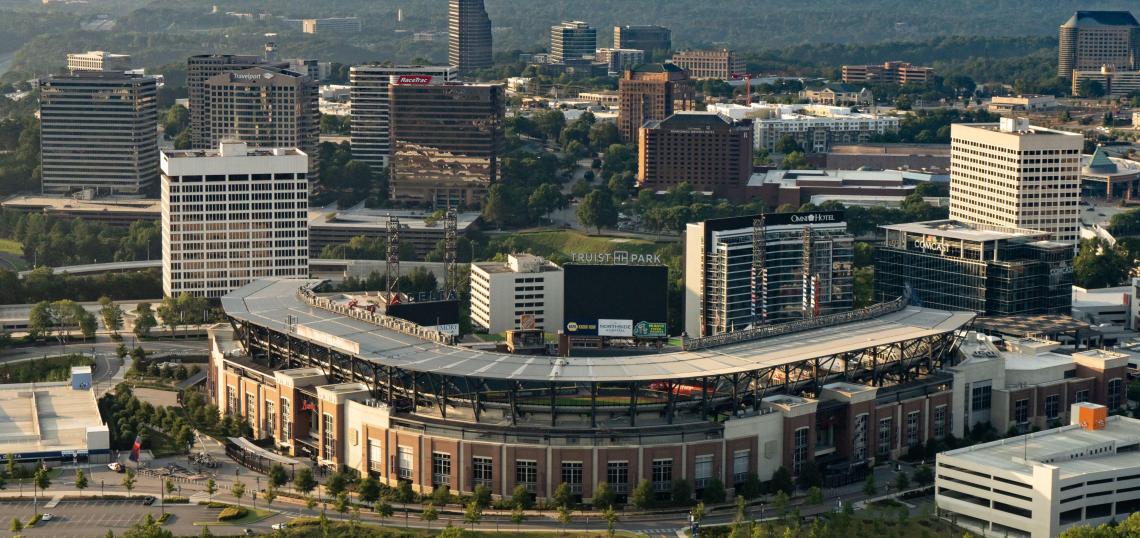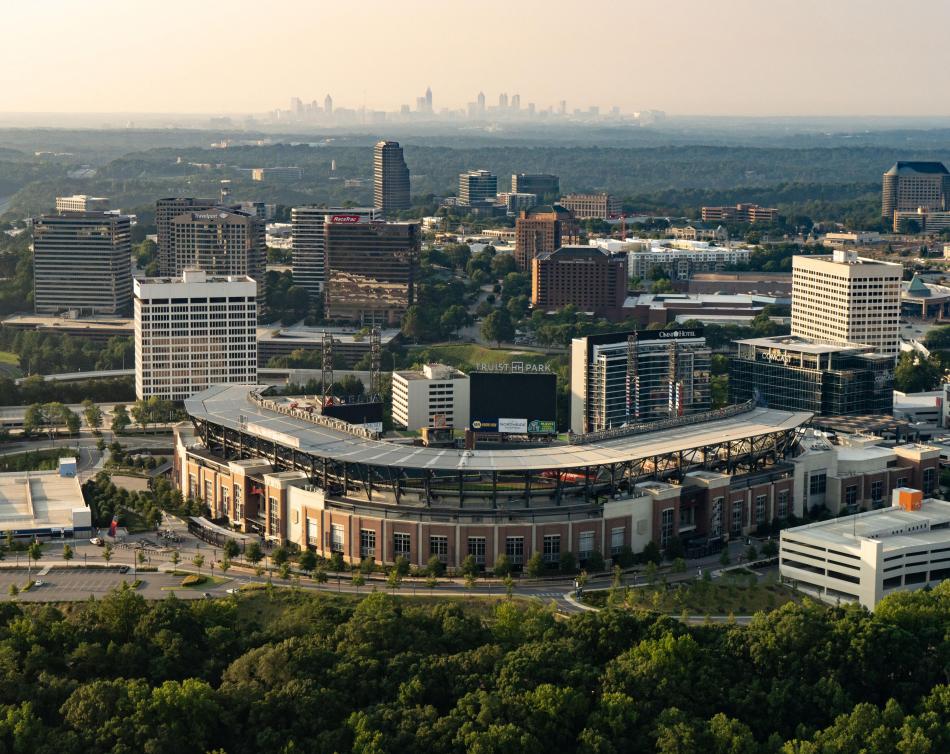Despite the condescending opinion of Los Angeles baseball scribes, Georgia's first Community Improvement District is more diverse, vibrant, tax-rich, and generally great than ever, according to an outside analysis of the growing Cobb County edge market.
Cumberland CID officials released the results of a 2021 economic impact analysis today that point to what CID leaders call record successes—34 years after the CID was established, and two years after the onset of a global pandemic.
CIDs are districts where commercial property owners pay extra property taxes to boost the community, theoretically, with projects that increase connectivity, vibrancy, and often, walkability. In Cumberland’s case, 190 property owners are part of the system.
Cumberland CID’s last comparable analysis was compiled in 2019. Since then, the CID’s impact on Georgia has swelled by nearly $4 billion to $23.6 billion, while the more localized impact on Cobb has grown $3 billion to $18 billion, according to findings by KB Advisory Group.
Other statistics show the CID is trending younger and more diverse than years past—and is changing beyond the hub of corporate offices Cumberland was known for previously.
Of the CID’s 30,000 residents, about 40 percent are millennials, the largest demographic. In terms of diversity, the study found that 40 percent of residents are Black, 40 percent white, and 13 percent Asian, among other groups.
CID leaders attribute residential growth to the magnetism of amenities, both natural and not, that range from Atlanta Braves games, The Battery Atlanta’s mixed-use offerings, Cobb Energy Performing Arts Centre events, and access to 840 acres of national parkland, 38 miles of trails, and the nearby Chattahoochee River. (Noticeably not mentioned: Cumberland Mall.)
Other findings showed the CID has roughly 3,300 businesses now with 83,840 employees. Retail is the top sector, counting about 17,000 jobs.
Over the next five years, almost 4.5 million square feet of development is in the Cumberland CID pipeline, including office, retail, hospital, and multifamily projects, the analysis found.
“When the CID was established 34 years ago, no one dreamed we would be seeing these kinds of figures today,” John Shern, the CID’s board of directors chairman, said in a press release. “We’re in a new wave of development for Cumberland.”
That wave, in recent months, has included TK Elevator’s new North American headquarters, a three-building complex at The Battery that includes more than 200,000 square feet of office space—and the tallest elevator test tower in North America.
Design work is also moving forward on a multimodal trail system that’s been compared to Cumberland’s version of the Atlanta BeltLine, albeit much smaller.
 A 2021 rendering showing a section of the three-mile "Cumberland Sweep" multimodal trail proposal near Cumberland Mall. Courtesy of Cumberland CID/2021
A 2021 rendering showing a section of the three-mile "Cumberland Sweep" multimodal trail proposal near Cumberland Mall. Courtesy of Cumberland CID/2021
The Cumberland Sweep project is expected to eventually form a three-mile loop, linking the CID’s most popular destinations.
The first piece of the Sweep to be built would run alongside The Battery and Truist Park. It would branch from there to Interstate 285 and over a pedestrian bridge to Cobb Galleria; in the other direction, the Sweep would snake south along Interstate North Parkway to the Chattahoochee River National Recreation Area, and then over I-75 via Akers Mill Road to Cobb Galleria.
At last check, the Sweep project was expected to be complete in 2027.
• Los Angeles media disses Atlanta Braves' mixed-use The Battery (Urbanize Atlanta)







